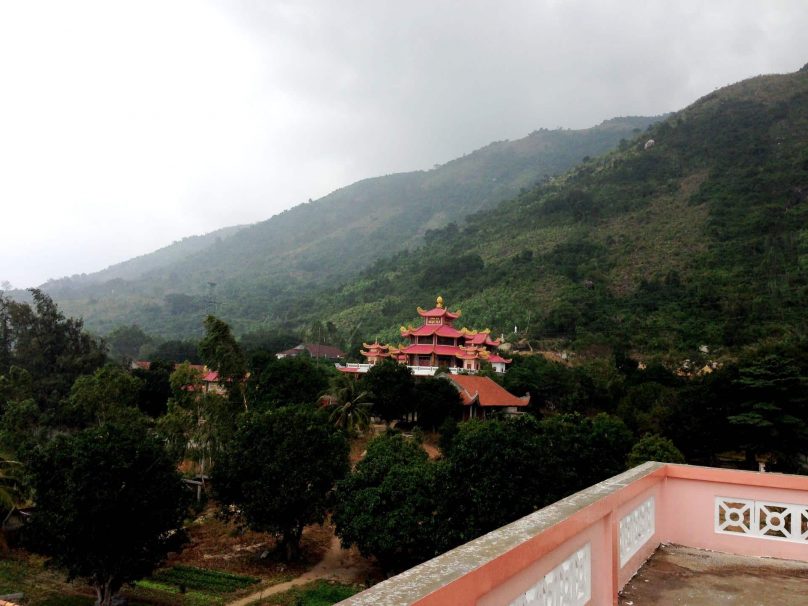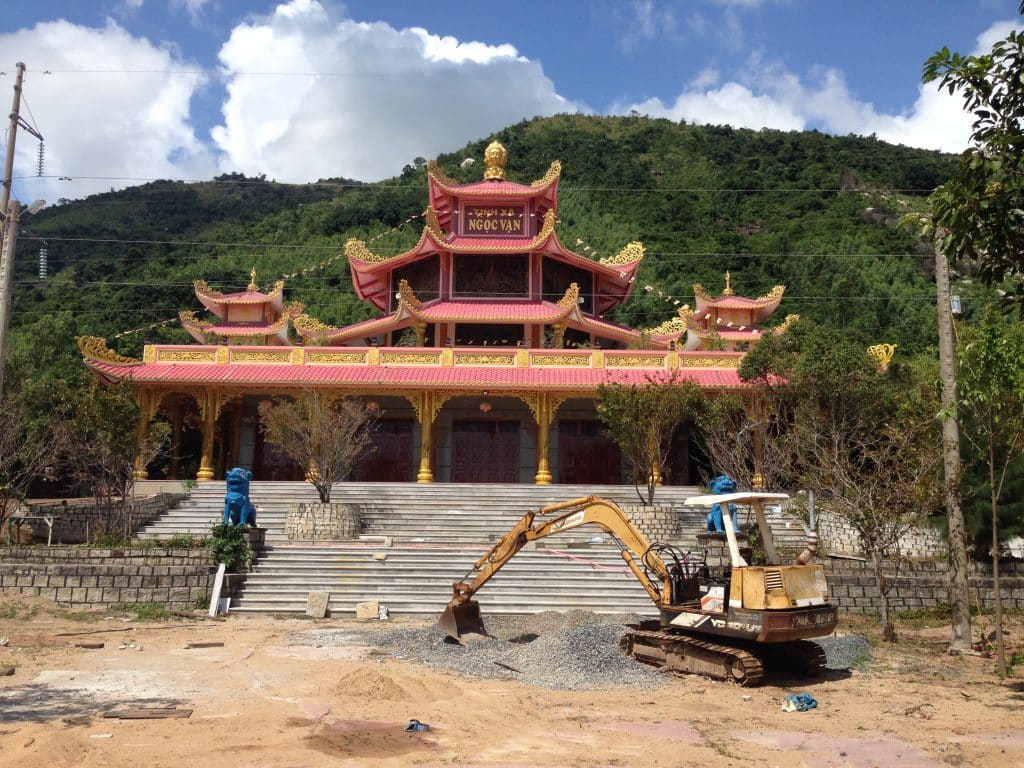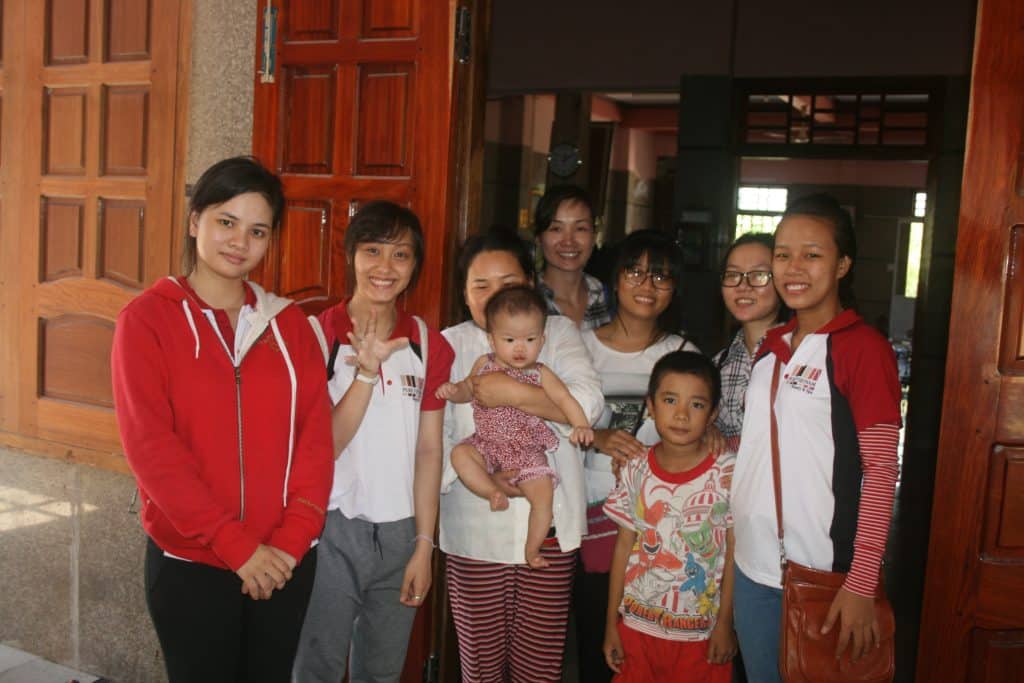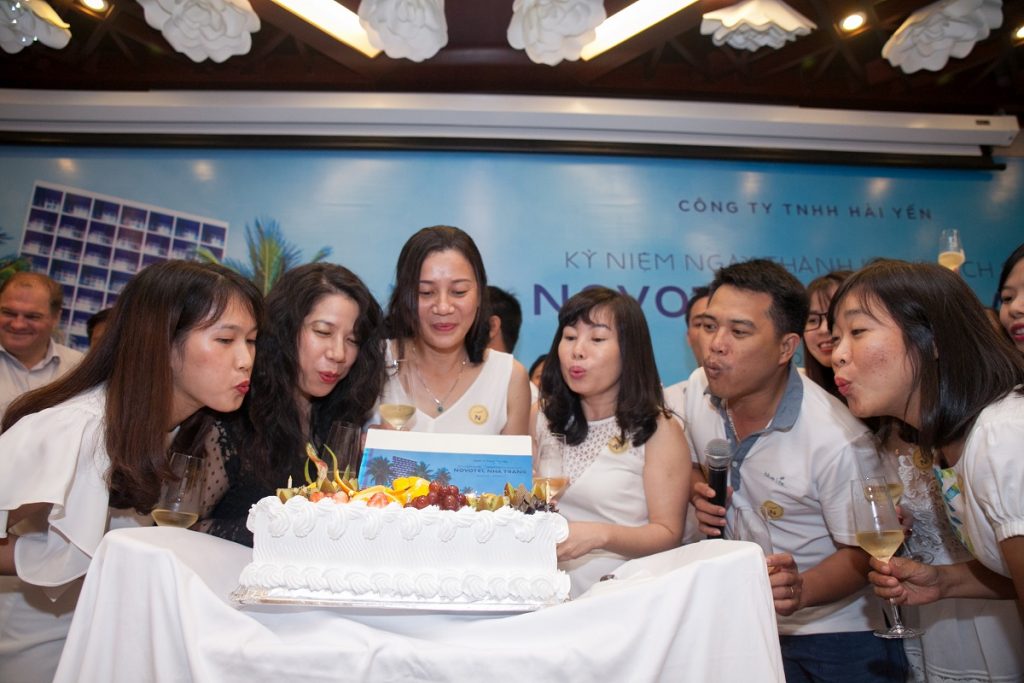Charity in the Tu Bong Community with Eileen Brown

The story of Tinh Xa Ngoc Van
In 1992, Giac Hanh was sent to Tu Bong by his master to start building a temple. There were no buildings and no facilities, and he slept in a mango tree before he started building a small temple. Giac Hanh had a big dream of building a Temple, a hospital and an orphanage for the local people of Tu Bong. He is a builder, and so he does the work himself, unlike other temples that hire builders to do for them. He is a very talented and hard working man that is very resourceful.
The first temple was opened in 1994. In total, they had 3 people in Tinh Xa Ngoc Van (the name of the temple) by the completion of the building. Giac Hanh was hand-splitting the granite, and painstakingly, piece by piece, they built the temple, obviously a very long and slow process. In 2010 they were gifted the second-hand machinery to cut the granite and some old vehicles were also donated. This has made an amazing difference. The cutting machine runs most of the day and night preparing slabs of granite so they may build furniture and buildings with it. The colours are beautiful when the granite is polished. A stunning black, grey and white speckled color palette.
Gradually more and more novices have come to live at the temple. There are now quite a few monks and novice monks living at the temple. The youngest who has just joined is 12, and the oldest is 80 years old. Yes, apparently he is still considered a novice as needs to be here for 5 years before he is considered a monk. They train for 2 years before becoming a novice, and then 3 years before they become a monk. However, they need to be at least 18 before they can become a monk. Unfortunately, The Most Venerable (Giac Hanh’s Master) passed away in 2014. My husband and I were privileged to be involved in some of his rehabilitation after he had a stroke. He had suffered for some time and wasn’t receiving any real physiotherapy. Obviously, he had some pain issues and the other monks don’t want to inflict pain on their leader so when he said no they obeyed. This ultimately didn’t help him a lot.
Steven did some massage, and I did some Bowen work along with some strengthening exercises. We taught the monks how to lift and move the Most Venerable without hurting their backs. After a period of time, we were able to get him sitting up independently and feeding himself. He was able to go and sit in his beloved garden and was able to attend the opening ceremony of the orphanage. All of these were things he loved. It was great to give him back some quality of life.
The importance of the temple
The temple is heavily involved in helping in the community. Local people come not only to pray, but also to hold regular retreats where they talk about community involvement, environmental concerns, and many other things. If there are old people in the community who don’t have any family to take care of them, Giac Hanh is sometimes able to help build them a small house. The temple provides the machinery and some of the labour, and through various groups of people affiliated with the temple, they provide the funds. Local people also provide some funding and volunteer in the construction. It is about a community working together to help others. There are some plans in the future to build small houses on the grounds of the temple for the elderly that have no family support. Not really a nursing home, but somewhere that they can be supported.
English for the children of Tu Bong
The temple wants to hold English classes for the local children so they may have a better chance for their future. They have run some intermittent summer school classes or Sunday English classes when they are able to. Giac Thong is the second in charge now, and he speaks moderately good English. He has a real passion for teaching English as well as the environment. He has been studying in Saigon, and has just come back from India where he achieved his Masters in Buddhism.
At the moment I am running a summer English program. We are teaching English to local children who have three months off from normal school. I started out with around 12 children the first day. They just all turned up, and were waiting for me to come out of the orphanage. I now have around 35 children: we have three different levels, and each day we seem to get more children as the word spreads. We focus on pronunciation and conversation. Most children learn grammar and can read English but can’t say the words. We don’t have a lot of resources but we are making do with what we have!
Some of my friends and contacts have been coming up and helping me with teaching English while helping in the orphanage, and we are having a lot of fun. The difference is amazing within a couple of weeks. I had a lady who I met from Germany come up and stay with me for three days. She was a dentist, and she bought all the children toothbrushes, and then we taught them how to brush their teeth properly and use dental floss. These are simple things, but when you don’t have easy access to dental care, then brushing your teeth properly can have a profound impact.
“Offrir Un Toit” is the name of a group of French and Swiss people, who are major benefactors of the temple with their various projects. They are helping with reforestation of the local mountain and surrounds, and this has been happening for the last four years. The local soil is very sandy, and there are some fears that there will be slippage from the mountain. To date, they have planted over 50 000 trees with another 4 000 seedlings growing at the moment. Because of this reforestation commitment, they have been granted the land rights for 50 years, and if they don’t cut down the trees in 10 years, the rights will be extended by a further 100 years.
Medical Care
A traditional medicine hospital was opened in February of 2011, and locals can come and receive treatment three times a week. The clinic has access to both a traditional medicine doctor and a western trained doctor who work together to treat the local people. If people require more involved treatment, then they are transferred to the bigger hospitals in either Nha Trang or Saigon. Some people who volunteer grow and harvest the traditional herbs and plants required for the various treatments. They also use acupuncture and cupping techniques to treat many pains and ailments. Recently, I received treatment here for a sore back. I had cupping, and needed to have a herbal steam bath. I received several treatments, and now, I’m well on my way to recovery.
The Orphanage
READ EILEEN’S ARTICLE ON THE KIDS AT TU BONG ORPHANAGE HERE
Vietnam has one of the highest abortion rates in the world. Unfortunately, around 40 percent of the pregnancies in the country end in abortion, according to statistics from Hanoi’s Central Obstetrics Hospital – this is double the official figure given. There are many different reasons for this; the legacy of child-bearing quotas, poor family planning advice for the young, and conflicting messages about sex have created a situation where abortion is a form of contraception. In an effort to help support the local people and try to offer an alternative to abortions, the decision was made to build the orphanage. Work began in 2010, and the process took four years, with the official opening in February 2014. “Offrir Un Toit”, and in particular, Ikea, provided $200,000 USD for the building of the orphanage. There are some rooms that have been built at the orphanage in the hope of a permanent school opening to teach the orphans and English for the orphans and local children.
One of the other things we were able to assist with was a kitchen for the orphanage. There was a competition on the internet, and there were several prizes on offer with one being a kitchen. With the help Steven with his internet knowledge, they won the kitchen, thus saving a lot of money.
Water Treatment
In 2013, the temple, with the help of the Australian Embassy, applied and received the funds from the Australian government to build a water purification plant. This treatment plant is capable of processing 500 liters of water every hour. This allows them the luxury of providing their own water without having to pay for it. They have a stream, and they also collect the rain during the rainy season.
Whilst the temple had a water treatment plant, it was decided that there was a real possibility that they could run out of water, especially during the dry season. It was decided that they needed a water reservoir. What they had previously was a hole in the ground with plastic lining it – certainly not enough capacity for 200 children, which is the eventual hope for the orphanage. We approached some friends of ours who were involved in Rotary in Thurangowa (Townsville, Australia), and they very generously funded the building of an 850 cubic meter water reservoir. This provides enough water for the orphanage, temple and for some of the local people if there is a dry spell. The reservoir is made from granite blocks pinned together and then cemented. The pins are handmade and were amazing to watch being manufactured. The reservoir sits behind the new temple overlooking the buildings. Because the reservoir is up high, they needed to get cranes and trucks up to it to lift the granite boulders into place, so a road needed to be constructed from granite off-cuts. This ensured that the machinery wouldn’t get bogged down, which was what was happening in the beginning. This, unfortunately delayed the project somewhat but it was completed in 2015.
The view from the top of the reservoir is spectacular. The vista is overlooking the surrounding rice fields with a view as far out as the ocean. At night, you can see the lights of all of the fishing boats twinkling in the distance. Giac Hanh is now in the process of building a meditation hall, and there will be some books available for reading on top of the reservoir. He feels that the view is so wonderful that it would be a great place to meditate and read books.
Eileen and Steven Brown are doing great work in the Tu Bong Community. Besides funding, human resources is one of the biggest things that they need. Perhaps you are a teacher who wants to share some of your knowledge, or have a skill that you can pass on to the community in areas such as self-sustainability, construction, environmental awareness, food production, healthcare etc.
If you would like to get involved in any way, whether it be through donations, or simply giving some of your time, then do get in touch with her or Steven!
DONATIONS can be made at their GO FUND ME page linked here!







